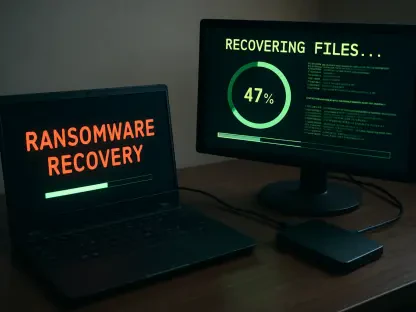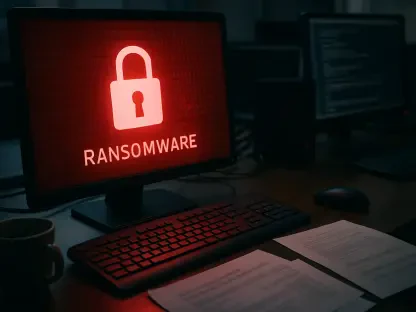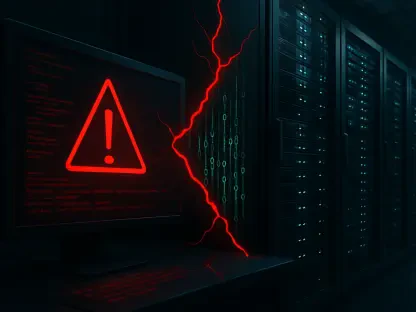In an era where digital security is paramount, the revelation of a new cybersecurity vulnerability targeting PNG image files has sent shockwaves through the tech community. Traditionally trusted for their lossless compression and high-quality image storage, PNG files are now under scrutiny for a hidden vulnerability. This threat, identified as CVE-PNG, has flipped the script on assumed file safety, opening doors for malicious activity through seemingly harmless images. The pervasiveness of image-rich content across digital platforms makes this vulnerability particularly concerning, with significant implications for personal devices, corporate networks, and beyond.
The Nature of CVE-PNG Vulnerability
Understanding CVE-PNG
CVE-PNG refers to a critical security flaw within the processing protocols of PNG files, allowing harmful code to be injected and executed when these files are opened. The traditional safety associated with PNG files has been undermined by this discovery, showing that these files can now be vehicles for unauthorized access and data breaches. This vulnerability exploits a previously unnoticed weakness in the way PNG files are handled by systems, exposing users to risk simply by viewing an image.
This revelation stresses the importance of examining even the most innocuous-seeming files for potential security risks. As digital platforms become more visually oriented, the potential for such vulnerabilities to be exploited increases exponentially. Cybersecurity experts are urgently working on developing patches and updates to address this flaw, aiming to mitigate the risks associated with opening compromised PNG files. The challenge lies in the ubiquitous nature of these files across various systems, making it a widespread issue that needs swift and comprehensive solutions.
Far-reaching Implications
The implications of the CVE-PNG vulnerability are vast, affecting a multitude of digital ecosystems. Personal devices, often used to view and share images, are at immediate risk, especially as these files are shared through various communication platforms and social media. Corporate networks, which may store vast libraries of images for marketing, training, or documentation purposes, similarly face significant threats. The breach could result in unauthorized data access, leading to potential data theft, financial loss, and reputational damage for affected organizations.
Another concern is the impact on industries heavily relying on image files, such as digital marketing, media, and e-commerce. These sectors must reassess their security protocols to prevent breaches that could compromise sensitive customer data or proprietary information. The pressing need for enhanced security measures can’t be overstated, as the repercussions of a breach could be both immediate and long-lasting. Ensuring that even such routine aspects of digital interaction are secure is paramount to maintaining trust in digital communications and transactions.
Emergence of Unconventional Threats
Shifting Cybersecurity Paradigms
The discovery of the CVE-PNG vulnerability marks a significant shift in the cybersecurity landscape, indicating that attackers are increasingly targeting unconventional attack vectors. Previously overlooked areas, such as image processing protocols, are now being exploited, showcasing the need for a holistic approach to cybersecurity. This trend highlights the importance of broadening the scope of cybersecurity strategies to include all data forms shared and processed in the increasingly digital world.
As cybersecurity firms respond to these emerging threats, innovation in defense mechanisms for image processing protocols is becoming a priority. Advanced protective measures are being developed to detect and neutralize malicious code embedded within image files. This proactive approach is essential in preempting attacks that exploit non-traditional vectors, ensuring a more secure online environment. The role of predictive analytics and artificial intelligence in identifying potential vulnerabilities before they are exploited is expanding, providing enhanced defenses against future threats.
User Education and Preventative Measures
User education has emerged as a critical line of defense in combating the CVE-PNG vulnerability. Enhanced awareness of cybersecurity best practices, such as regularly updating software and maintaining vigilance even with everyday file formats like PNG, is crucial in mitigating risks. Users who are well-informed about the risks and proper handling of files can serve as the first layer of protection against cyber threats. This educational effort must encompass all levels of user interaction with technology, from individual users to organizational protocols.
Industries must also implement and enforce robust cybersecurity measures, continuously updating their defenses in the face of evolving threats. This includes regular system audits, patch management, and employee training programs geared towards identifying and responding to potential threats. By fostering a culture of security awareness and preparedness, organizations can significantly reduce their susceptibility to attacks. As technology advances, maintaining a vigilant stance on cybersecurity is more important than ever, ensuring that digital interactions remain secure despite the evolving nature of threats.
Future Directions in Cybersecurity
Advances in Technology and Image Processing
Looking ahead, the evolution of technology will inevitably bring about new aspects of image processing that may introduce additional vulnerabilities. As image processing capabilities become more sophisticated, so do the techniques available to cyber attackers. Predictive analytics and artificial intelligence are expected to play pivotal roles in preemptively identifying and mitigating these emerging threats. These advanced tools can analyze vast amounts of data and predict potential security breaches before they happen, allowing for swift and effective responses to protect against vulnerabilities.
However, the responsibility does not lie solely with technology. Continuous efforts in maintaining and enhancing cybersecurity measures are indispensable. This entails collaboration across industries, with developers, cybersecurity professionals, and informed users all contributing to a fortified digital landscape. Regular updates, vigilant security practices, and an ongoing commitment to innovation in defense strategies are key components to ensuring a secure digital future. As digital interactions become increasingly visual, the combined efforts of these stakeholders will be essential in safeguarding sensitive information from threats.
Proactive Cybersecurity Strategies
In today’s world, where digital security is more crucial than ever, a new cybersecurity vulnerability targeting PNG image files has sent ripples through the tech industry. Historically valued for their lossless compression and superior image quality, PNG files are now under the spotlight due to a newfound vulnerability. This security gap, identified as CVE-PNG, has upended beliefs about the safety of these files, enabling malicious activities through what appear to be innocuous images. The widespread use of image-rich content across various digital platforms heightens the severity of this threat, posing risks not only to personal devices but also to corporate networks and other digital infrastructures. Consequently, the tech community is on high alert, as the implications of this discovery extend far and wide, potentially affecting countless users and organizations globally. As a result, it is imperative for individuals and businesses alike to stay informed and vigilant, updating their security protocols to mitigate this emerging risk.









